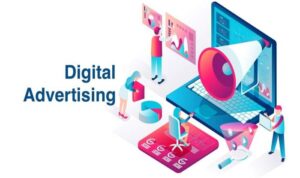Kicking off with Using Email Marketing Automation, this opening paragraph is designed to captivate and engage the readers, setting the tone american high school hip style that unfolds with each word.
Are you ready to take your email marketing to the next level? With automation tools at your disposal, you can streamline your campaigns for maximum impact and efficiency. Let’s dive into the world of Using Email Marketing Automation and discover how it can revolutionize your marketing strategy.
Benefits of using email marketing automation
Automating email marketing campaigns offers numerous advantages for businesses looking to streamline their marketing efforts and improve results. By utilizing automation tools, companies can save time, increase efficiency, enhance personalization, and boost customer engagement and conversion rates.
Time-saving automation
Automation allows businesses to schedule emails in advance, set up triggered campaigns based on user behavior, and send personalized messages at scale without manual intervention. This saves time for marketing teams and ensures timely delivery of content to the right audience.
Efficiency improvement
With automation, marketers can set up workflows that automatically segment subscribers, send targeted content based on preferences or actions, and track performance metrics in real-time. This level of automation streamlines the marketing process and helps teams focus on strategy and creativity rather than repetitive tasks.
Enhanced personalization and targeting
Automation tools enable businesses to create dynamic content, personalized recommendations, and targeted offers based on customer data and behavior. By delivering relevant content to individual subscribers, companies can increase engagement, build loyalty, and drive conversions.
Impact on customer engagement and conversion rates
Automated email campaigns can significantly improve customer engagement by delivering timely, relevant messages to subscribers. By nurturing leads, re-engaging inactive users, and providing valuable content, businesses can increase conversion rates and generate more revenue from their email marketing efforts.
Implementing email marketing automation

Implementing email marketing automation can streamline your marketing efforts and help you reach your audience more effectively. By setting up automated email sequences, you can save time, increase engagement, and drive conversions.
Steps to Setting Up Email Marketing Automation
- Choose an email marketing automation tool that suits your needs and budget.
- Set up your email list and segment it based on demographics, behaviors, or preferences.
- Create engaging email templates that align with your brand and message.
- Develop a content strategy for your automated email sequences, including welcome emails, product recommendations, and follow-up messages.
- Set triggers and rules for your automated emails to ensure they are sent at the right time to the right audience.
- Monitor and analyze the performance of your automated email campaigns to optimize results.
Comparison of Email Marketing Automation Tools
- Mailchimp: User-friendly interface with a variety of automation features.
- HubSpot: Offers advanced automation capabilities and integrates with CRM systems.
- ConvertKit: Ideal for bloggers and content creators with easy-to-use automation workflows.
- ActiveCampaign: Provides robust automation tools with advanced segmentation options.
Best Practices for Segmenting Email Lists for Automation
- Segment based on demographics, purchase history, engagement levels, and interests.
- Personalize your emails for each segment to increase relevance and engagement.
- Test different segmentation strategies to find what works best for your audience.
Tips for Creating Effective Automated Email Sequences
- Start with a welcome email to introduce your brand and set expectations.
- Use a series of emails to nurture leads and guide them through the customer journey.
- Include a clear call-to-action in each email to drive conversions.
- A/B test your email content, subject lines, and send times to optimize performance.
Personalization in email marketing automation

Personalization in email marketing automation is crucial for engaging customers and driving conversions. By tailoring content to individual preferences and behaviors, businesses can create more relevant and targeted campaigns that resonate with their audience on a personal level.
Importance of Personalizing Emails
Personalizing emails allows businesses to connect with customers on a deeper level, increasing the likelihood of engagement and conversion. By incorporating customer data such as past purchase history, browsing behavior, and demographic information, companies can deliver highly targeted content that speaks directly to the recipient’s interests and needs.
- Customized subject lines and content based on user preferences
- Dynamic content blocks that change based on user behavior
- Segmented email lists to deliver personalized messaging to different customer groups
Strategies for Personalizing Content
Implementing personalization in email marketing automation can be achieved through various strategies, including utilizing dynamic content, segmentation, and triggered emails based on user interactions. By analyzing customer data and behavior, businesses can tailor their messaging to align with user preferences and increase engagement.
- Utilize merge tags to insert personalized information such as the recipient’s name
- Create dynamic content blocks that change based on user behavior or preferences
- Segment email lists based on customer data to deliver targeted messaging
Successful Personalized Email Campaign Examples
Several companies have successfully implemented personalized email campaigns to drive engagement and conversions. For example, Amazon sends personalized product recommendations based on a user’s browsing and purchase history, increasing the likelihood of a sale. Similarly, Spotify delivers personalized playlists and music recommendations based on user listening behavior, enhancing the user experience and driving retention.
- Amazon’s personalized product recommendations
- Spotify’s personalized music recommendations
- Netflix’s personalized content suggestions based on viewing history
Improving Open Rates and Click-Through Rates
Personalization in email marketing automation has been shown to improve open rates and click-through rates significantly. By delivering tailored content that resonates with recipients, businesses can capture their attention and drive action, ultimately leading to higher engagement and conversions.
- Increased relevance and alignment with user preferences
- Enhanced user experience through personalized content
- Higher engagement and conversion rates due to targeted messaging
Measuring the success of email marketing automation: Using Email Marketing Automation
When it comes to email marketing automation, tracking the performance of your campaigns is crucial to ensure you are achieving your goals and maximizing results. By analyzing key metrics, conducting A/B testing, using analytics, and making data-driven decisions, you can refine your automated email campaigns for better outcomes.
Key Metrics to Track, Using Email Marketing Automation
- Open Rate: Measure how many recipients open your emails to gauge the effectiveness of your subject lines and sender name.
- Click-Through Rate (CTR): Track the percentage of recipients who click on links within your emails to assess the engagement level.
- Conversion Rate: Monitor the number of recipients who complete a desired action, such as making a purchase or signing up, to evaluate the overall success of your campaign.
- Unsubscribe Rate: Keep an eye on how many recipients opt-out of your emails to understand if your content is relevant and engaging.
A/B Testing for Optimization
- Subject Lines: Test different subject lines to see which ones resonate best with your audience and result in higher open rates.
- Call-to-Action (CTA): Experiment with different CTAs to determine which ones drive more click-throughs and conversions.
- Content: Try variations in content, such as images, copy, and layout, to identify what resonates best with your subscribers.
Using Analytics to Refine Campaigns
Analytics tools can provide valuable insights into the performance of your automated email campaigns, allowing you to track engagement, conversion, and overall ROI.
Data-Driven Decisions for Optimization
- Segmentation: Use data to segment your audience based on behavior, preferences, and demographics to deliver more targeted and personalized campaigns.
- Automation Triggers: Set up triggers based on user actions to send timely and relevant emails, increasing engagement and conversions.
- Optimization: Continuously analyze data to identify trends, patterns, and areas for improvement, making data-driven decisions to optimize your email marketing automation strategy.





